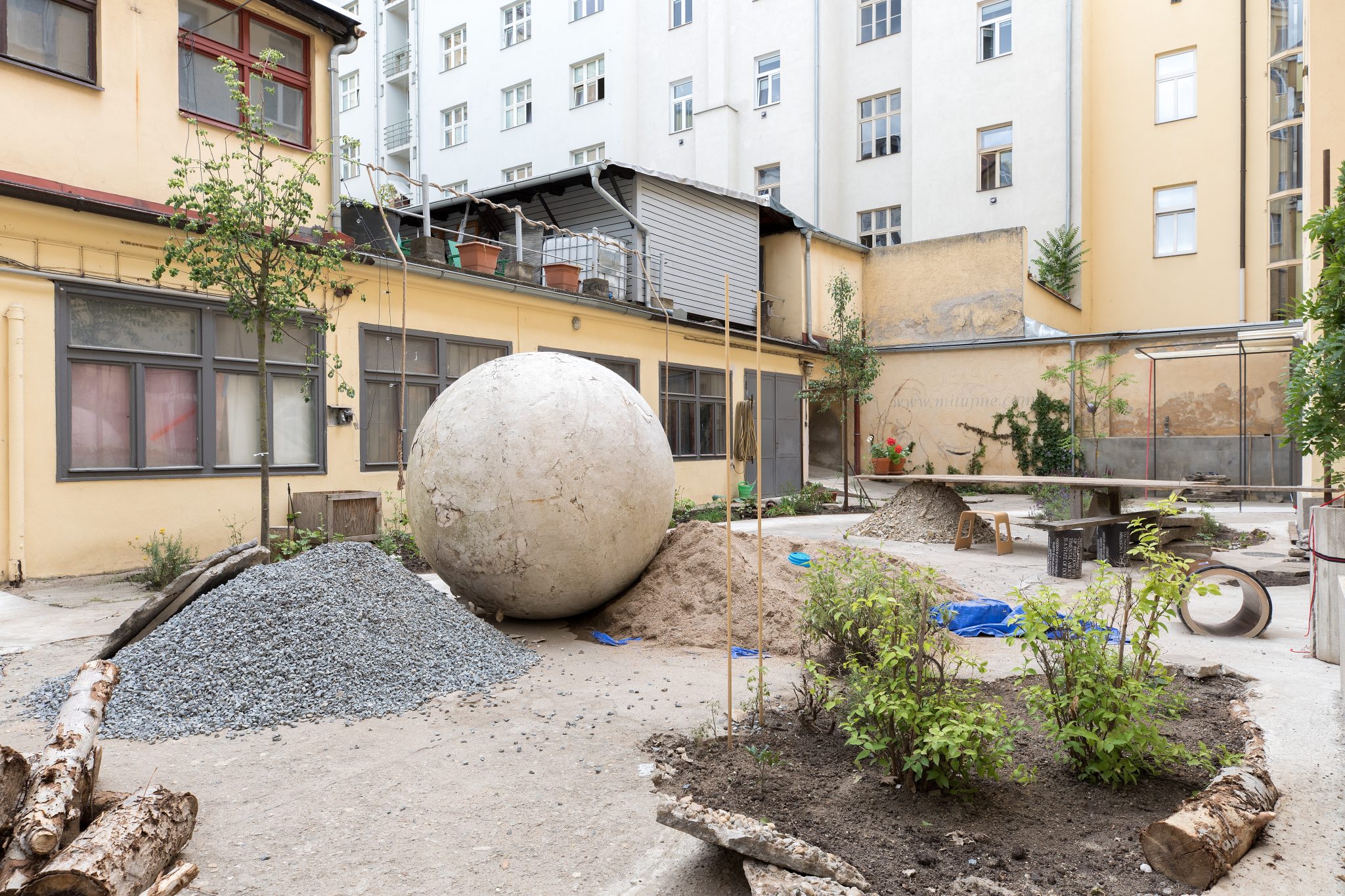Let’s go outside, even if it rains! at Hunt Kastner, Prague allows us to rethink the implications of Land art or relational aesthetics for the urban space
For Let’s go outside, even if it rains!, Dominik Lang took over and rebuilt the patch of land behind Hunt Kastner’s Žižkov space, transforming it into a public garden during the show’s run. Edith Jeřábková’s text, available on the gallery’s website, warned that viewers arriving before the end would likely see process rather than completion: rubble, heaps of soil and builders’ sand, tools and materials covered in tarpaulin, broken footpaths. Inside, blueprints covered in the Prague-born Lang’s jottings hung on the walls, while a long table displayed unearthed objects (broken pottery, soggy football, tatty doll’s head) shown like finds from an archaeological dig.
Jeřábková’s text also implied that viewers could make repeat visits to see how the work changed over time, and that Lang would be there to explain what was going on to mitigate any feelings of dissatisfaction.
Even at the stated completion of the project a month later, though, it still felt unfinished. The dunes of earth, grit and debris were still there, now looking like forbidding pyramids exposed to a menacing overcast sky; a shattered slab of concrete leaned against a cylindrical concrete plant-pot and a huge stone sphere against one of the piles of sand. Anyone expecting the dazzling ‘reveal’ of a horticultural makeover show would have been disappointed; but at least the concrete walkways had been filled in, and the plants were nestled in handmade beds of soil.
Lang’s intervention doesn’t attempt to relitigate theoretical debates about Land art or relational aesthetics but allows us to rethink some of their implications for Prague’s urban space. He isn’t asking what a ‘site’ is; nor is he making any bold claims for art’s social impact. Rather, he’s making a refusal, and the context matters: today’s Prague is a former backwater rebranded as an emerging, if ‘peripheral’, global art market context, a luxury tourist destination and an opportunity for foreign investors lured by rising property values. Financial assets always refer to something outside themselves, the ‘value’ of real things; and Lang’s project suggests that they and artworks typically share a conceptual structure, art also tending to operate allegorically, signifying something externalised. Let’s go outside, conversely, tries to sidestep this, emphasising itself as primarily an act of labour. Lang’s action of digging, mixing concrete and planting ferns is also tied to the specifics of the gallery’s location, situated as it is at the top of a steep hill, making it a good place to rest. The unfinished-feeling outdoor space might thus be read as something of a protest against, and a respite from, the financial deformation of artistic abstraction, stressing the labour that went into the work, its location and the communal act of watching the artist’s labour. The result, nevertheless, is that those bleak sandy piles seem as much a product and echo of the general sense of cultural weariness – partly driven by economic conditions – as they are an invitation to take part in the collective rebuilding of our societies, ‘even if it rains’.
Let’s go outside, even if it rains! at Hunt Kastner, Prague, 4 May – 24 June
